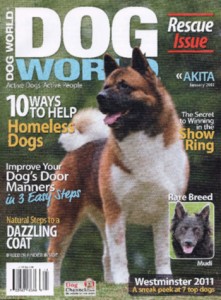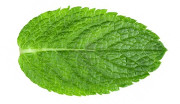As seen in the January 2011 issue of Dog World magazine.

It’s been said that eyes are a reflection of one’s soul. As a holistic veterinarian, I find a dog’s coat to be a reflection of his inner health. In fact, Chinese Medicine teaches that the health of the liver is mirrored in both the eyes and the coat. Several components work synergistically to create that vibrant coat – the one that stops you in your tracks to catch another glance.
Coat Gardening Made Easy
How does growing a great lawn compare to growing a great coat? For just a moment, think of the inner environment of your dog’s body as soil. This soil creates his inner biological terrain and is the single most important factor in both maintaining good health and in growing a great coat. Good soil grows strong healthy plants. We all know that we need to routinely fertilize our lawns to grow thick, verdant grass. All the cells in our pet’s bodies also need ‘fertilizer’, in the form of a complete and balanced supplement, to do their jobs well.
It’s Not Just About Calories
Proteins, fats and carbohydrates supply calories but not the tools needed for the maintenance and continued health of our dogs. The cells in our dog’s bodies are like miniature cities, bustling around and continually repairing themselves. Quality supplementation will provide the tools needed for living and will help to grow healthy, thick coats with good pigment. Deserving Pets www.deservingpets.com has designed a preventive supplement having superior ingredients for both coat and general health. A distinct improvement in the coat is noticed within two or three weeks and dogs really love the taste.
The Well Oiled Do
Coconuts and their oil are classified as ‘functional foods’ because they provide many health benefits beyond their excellent nutritional content. At one time, coconut oil was a significant part of the American diet, with the food industry considering it superior for use in food preparation. During WW II when the Japanese occupied most of the countries producing coconut oil, Americans were forced to turn to other oils for cooking. Recently, coconut oil is coming into it’s own once again. It’s medium chain fatty acids are used immediately in the body without circulating in the bloodstream. Its daily use reduces dandruff and odor and supports thyroid function. Coconut contains Lauric acid; famous for its anti-viral, anti-fungal and anti-bacterial properties. I suggest gradually moving up to one teaspoon of coconut oil per 10 lbs of body weight divided between two meals. Dogs typically enjoy the taste and you can find it at any health food store and many markets.
Thyroid Function
Interestingly, thyroid hormones increase the metabolic activities of almost all the tissues in the body, including those that create the coat. That’s because thyroid hormones have the capacity to activate nuclear transcription in the genes, leading to the formation of proteins in the body. A quality supplement and coconut oil help to support the thyroid, but it’s still a good idea to routinely test the thyroid function in an older dog. A company called Hemopet http://www.hemopet.org/ performs a very complete thyroid test and it’s founder, Dr. Jean Dodds, is a foremost authority on thyroid problems.
Homeopathy Can Help
Some dogs may need just a little more help to move things right along. The homeopathic remedy Lycopodium 6c is easily found in health food stores. I’ve been know to say that you can almost watch the coat growing when you give this remedy for a month. Just give one pellet slipped into the lip pouch and let it melt on the gums. Homeopathy doesn’t work like pharmaceutical drugs so you only need to give it once a day for one month.
A Little Help from Our Herbs
While all the shampoo and conditioner in the world can’t replace the luxurious vibrant coat grown with good health from within, there’s a wonderful, inexpensive home-made rinse you can use after shampooing to further enhance the coat.
Healthy rinse and/or spray
2 tablespoons of chopped Rosemary leaves
2 tablespoons of chopped Lavender leaves
2 Tablespoons of apple cider vinegar
Place ingredients in glass or enamel pot and add 6 cups of water. Bring to a boil and, after a brisk boil is achieved, immediately remove from heat. Let mixture sit for a few hours, then strain and store. Use as rinse after a shampoo.
*From the book Dr. Khalsa’s Natural Dog
Ask The Holistic Veterinarian
Dear Dr. Khalsa
My eight-year old Pomeranian, Buddy Boy, has two bald spots on either side of his rump. Two years ago I had his thyroid tested and routine blood tests and they’ve all come back normal. He doesn’t itch or scratch and I just can’t figure out why he has these matching bald spots. I think his coat has thinned out over the years, too.
— Tammy
Dear Tammy,
First of all, I’d suggest you have a routine yearly blood test and also check his thyroid again. Check both his T4 and Free T4. Buddy Boy’s thyroid function may have tested normal two years ago but may be low now. Two years is a longer span in a dog’s life than in ours. Typically, hypothyroid dogs can’t grow a good coat. You may also want to do a histopathology with your veterinarian in order to arrive at a possible diagnosis.
If his thyroid is normal, you can begin to give him melatonin, available at most health food stores. A dog his size would get 1 mg once a day. I’ve had many dogs with similar coat problems respond very well when given melatonin.
You can also open up a Vitamin E capsule and rub the contents right onto each bald spot, increasing circulation to the area and stimulating growth. Vitamin E is good to apply topically to areas that aren’t growing new coat.
Dr. Deva Khalsa, VMD

 About Dr. Khalsa
About Dr. Khalsa